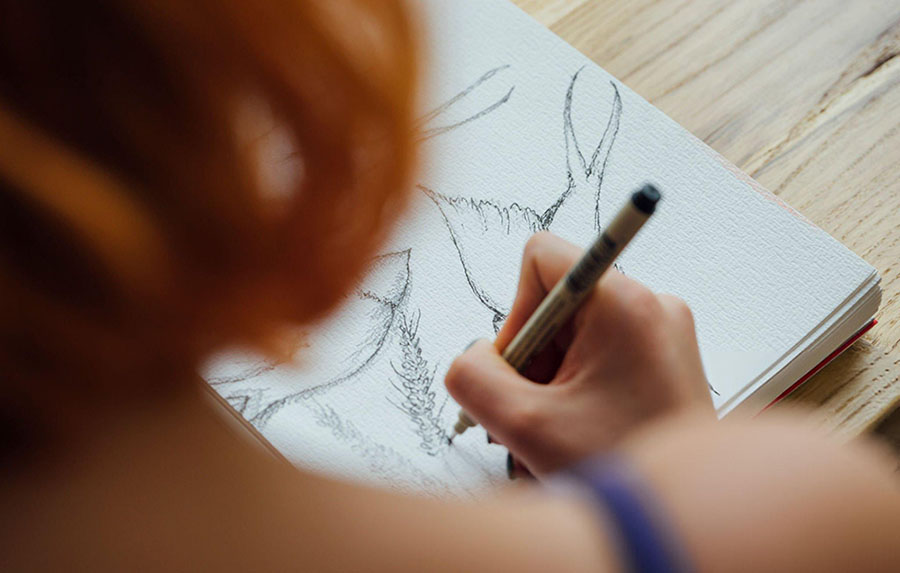Pencil drawings have a unique charm that captivates artists and art lovers alike. There’s something magical about graphite gliding across paper, creating intricate details and lifelike images with just a few simple strokes. Whether you’re doodling in a notebook or crafting an elaborate masterpiece, Pencil:f9kdhkibbmm= Drawings offer endless possibilities for creativity and expression.
For those new to this art form, the world of pencil drawing may initially seem daunting. However, armed with the right materials and techniques, anyone can create stunning artwork that showcases their individuality. This blog post will guide you through everything you need to know about pencil drawings from essential tools to inspiring ideas ensuring your artistic journey is both enjoyable and fulfilling. Get ready to unleash your inner artist!
Materials Needed for Pencil:f9kdhkibbmm= Drawings
- Creating stunning Pencil:f9kdhkibbmm= Drawings begin with the right materials. A good quality sketchbook is essential. Look for paper that can handle shading and erasing without tearing.
- Next, invest in a set of pencils ranging from hard to soft leads. Graphite pencils labeled H through B each serve unique purposes in your art. H pencils create fine lines while B pencils excel at deep shadows.
- Don’t forget an eraser! A kneaded eraser is versatile; it lifts graphite beautifully without damaging the paper.
- Consider blending tools like tortillons or blending stumps. They help smooth transitions between shades and add depth to your work.
- These simple supplies will set you on the path toward creating beautiful pencil drawings filled with life and detail.
Tips for Beginners in Pencil:f9kdhkibbmm= Drawings
- Starting your journey with pencil drawings can be exciting yet daunting. Embrace the learning process, and don’t rush yourself. Each stroke is a step toward improvement.
- Begin by practicing basic shapes like circles and squares. These foundational forms build your understanding of light, shadow, and perspective.
- Experiment with various pencil pressures to see how they affect shading. A gentle hand creates soft tones while firm pressure gives you darker lines.
- Don’t hesitate to reference photos or real-life objects as guides. Observing details helps sharpen your skills in realism.
- Keep a sketchbook handy for daily practice. Consistency fosters growth and creativity over time allow yourself to make mistakes; they are part of the artistic journey!
Types of Pencils and Their Uses in Drawing
- When it comes to Pencil:f9kdhkibbmm= Drawings, the type of pencil you choose can make a significant difference. Graphite pencils are the most common and come in various grades. The grading scale runs from H (hard) to B (black), with F sitting in between. Hard pencils create fine lines, ideal for detailed work.
- For softer sketches, opt for B-grade pencils. They produce darker marks and allow for smoother shading techniques. Many artists combine different grades to achieve depth and contrast in their drawings.
- Colored pencils add another layer of creativity. They offer vibrant hues that can enhance your artwork or create entirely new pieces altogether.
- Mechanical pencils provide precision, perfect for intricate designs requiring consistent line width. Each type has its unique purpose and qualities that can elevate your creative process significantly.
Step-by-Step Guide to Creating a Simple Pencil:f9kdhkibbmm= Drawings
- Start with a clean piece of paper and gather your materials. Choose your favorite pencil, preferably an HB or 2B for sketching.
- Begin by lightly outlining the basic shapes of your subject. Use simple geometric forms as guides. This will help maintain proportions.
- Next, refine those shapes into more defined lines. Focus on capturing the essence without overthinking details at this stage.
- Once you’re satisfied with the outline, start shading gently to create depth and dimension. Remember to observe light sources in your reference.
- Gradually build up darker areas where shadows fall, using softer pencils like 4B or 6B for rich tones.
- After shading, take a moment to step back and evaluate your work. Add fine details or highlights as needed to enhance realism or texture.
- Don’t forget to sign your masterpiece!
Techniques to Enhance Your Pencil:f9kdhkibbmm= Drawings
- Using shading techniques can dramatically elevate your pencil drawings. Experiment with hatching, cross-hatching, and stippling to create depth and texture. Each method adds a unique flair while enhancing the overall visual appeal.
- Layering is another powerful technique. Start with light strokes and gradually build up darker shades. This approach not only gives dimension but also allows for greater control over contrast.
- Consider incorporating blending tools like tortillions or your fingers. Blending softens harsh lines, resulting in smoother transitions between shades. This technique works wonders for skin tones or skies.
- Don’t hesitate to explore different angles of light in your composition. Playing with highlights and shadows brings life to your work, making it more dynamic.
- Practicing negative space drawing can sharpen your observational skills. Focusing on the spaces around subjects often reveals surprising details you might otherwise overlook.
Inspiration and Ideas for Creative Pencil:f9kdhkibbmm= Drawings
- When searching for inspiration for pencil drawings, the world around you is a treasure trove. Nature offers endless possibilities; try capturing the intricate details of leaves or the delicate structure of flowers.
- Urban landscapes can also ignite creativity. Sketch bustling streets, towering buildings, or quiet alleyways to explore different perspectives and angles.
- Looking into everyday objects at home fruits, kitchen utensils, or even your pet can become fascinating subjects when drawn thoughtfully. Experimenting with still life allows you to play with light and shadow.
- Art challenges are another excellent source of ideas. Join online communities where artists share prompts that push your boundaries and encourage exploration beyond your comfort zone.
- Don’t forget about emotions! Draw scenes that depict feelings like joy, sadness, or nostalgia using visual metaphors to convey deeper meanings through simple lines and shading techniques.
Conclusion
Pencil drawings offer a unique way to express creativity and capture the world around us. With just a few materials, anyone can start exploring this art form. Whether you’re a beginner or looking to refine your skills, understanding different pencil types and techniques is essential. Creating captivating artwork requires practice, but it’s rewarding. With each sketch, you’ll develop your style and find inspiration in everyday life.
Don’t hesitate to experiment with new ideas or take on challenges that push your boundaries. As you embark on this artistic journey, remember that every drawing tells a story. Embrace the process of discovery as much as the final product itself. Keep pushing your creative limits with pencil:f9kdhkibbmm= drawings!














Leave a Reply